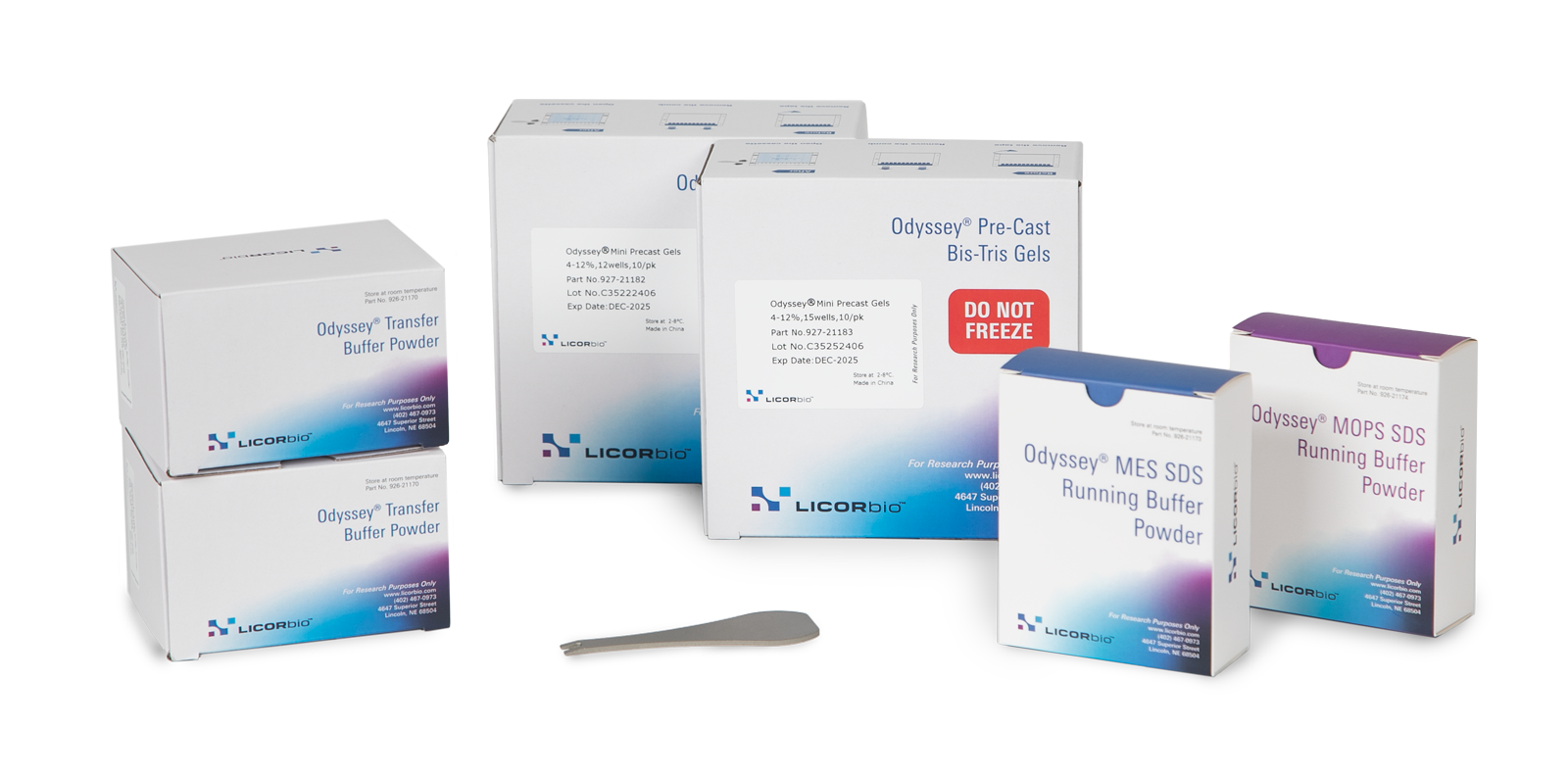ELISA
The enzyme-linked immunosorbent assay (ELISA), is a plate-based detection method for detecting and quantifying substances and biological samples (e.g., proteins, peptides, and antibodies).
General Workflow
To begin an ELISA, an unknown amount of antigen is first immobilized to a surface (e.g., a polystyrene 96- or 384-well microplate) either non-specifically (via adsorption to the plate) or specifically (via a capture antibody bound to the plate). Once the antigen is immobilized, a primary and/or secondary antibody is added to the plate and binds to the antigen; this primary antibody is either conjugated to an enzyme or bound by the enzyme-conjugated secondary antibody. The enzyme is then added, which reacts with the enzyme conjugate (either on the primary or secondary antibody) to produce a measurable byproduct, which can be detected with several methods. Between each step, the microplate is washed with a mild detergent.
Types of ELISA
There are four types of ELISA: Sandwich, Direct, Indirect, and Competitive. The appropriate ELISA for your assay depends on the desired protocol length, number of antibodies, and required sensitivity, flexibility, and specificity.
Sandwich ELISA
The Sandwich ELISA is the most common type of ELISA. It requires the use of two paired antibodies, which are specific to different epitopes of the antigen, to effectively trap or ‘sandwich’ the antigen between them on the plate’s surface. The Sandwich ELISA adheres to the following basic procedure:
- The unlabeled antibody (i.e., capture antibody) is added to and coats the plate’s surface.
- The antigen is added to the plate’s surface and is ‘captured’ by or bound to the capture antibody.
- The second enzyme-labeled antibody conjugate is added to the plate and binds the antigen, ‘sandwiching’ it between the two antibodies.
- The substrate is added to the plate, reacts with the enzyme conjugate, and produces a measurable byproduct.
- The measurable byproduct is detected.

Direct ELISA
The direct ELISA uses an enzyme-labeled primary antibody conjugate to bind the antigen and react with the added substrate. It adheres to the following basic procedure:
- The antigen (Ag) is added to, absorbed by, and immobilized on the plate’s surface.
- The antigen is bound by an enzyme-labeled primary antibody conjugate that is specific to the antigen.
- The substrate is added to the plate, reacts with the enzyme conjugate, and produces a measurable byproduct.
- The measurable byproduct is detected.

Indirect ELISA
The indirect ELISA is similar to the direct ELISA. However, instead of an enzyme-labeled primary antibody conjugate, it uses an unlabeled primary antibody to bind the antigen and an enzyme-labeled secondary antibody conjugate to bind the primary antibody and react with the added substrate. The indirect ELISA adheres to the following basic procedure:
- The antigen (Ag) is added to, absorbed by, and immobilized on the plate’s surface.
- The antigen is bound by an unlabeled primary antibody that is specific to the antigen.
- The unlabeled primary antibody is bounded by an enzyme-labeled secondary antibody conjugate that is specific to the primary antibody.
- The substrate is added to the plate, reacts with the enzyme conjugate, and produces a measurable byproduct.
- The measurable byproduct is detected.

Competitive ELISA
The Competitive ELISA, also known as the Inhibition ELISA, uses an enzyme-labeled antibody to bind two antigens (known or reference and sample). Both antigens ‘compete’ to bind to the labeled antibody, and the detected signal indicates the bound amounts of each. A weaker signal indicates less enzyme-labeled antibody has bound to the reference antigen on the plate, and more antigen is present in the test sample. The inverse is true regarding a stronger signal.
The Competitive ELISA adheres to the following basic procedure:
- The known antigen (i.e., reference antigen) is added to, absorbed by, and coats the plate’s surface.
- The sample antigen is incubated with an enzyme-labeled antibody.
- The sample antigen and enzyme-labeled antibody mixture are added to the plate’s surface.
- Any enzyme-labeled antibodies that did not bind to the sample antigen bind to the reference antigen.
- The sample antigen and any remaining unbound enzyme-labeled antibodies are removed.
- The substrate is added to the plate, reacts with the enzyme conjugate, and produces a measurable byproduct.
- The measurable byproduct is detected.

Advantages and Disadvantages
Each ELISA type has specific advantages and disadvantages; depending on your research requirements, they can help determine which type is most suitable.
| Advantages | Disadvantages | Example Applications | |
|---|---|---|---|
| Sandwich ELISA |
|
|
|
| Direct ELISA |
|
|
|
| Indirect ELISA |
|
|
|
| Competitive ELISA |
|
|
|
Detection Methods
ELISA detection involves measuring the amount of byproduct produced by the reaction between the substrate and enzyme conjugate; in general, a byproduct’s signal intensity is proportional to the amount of bound antigen on the plate. Depending on the substrate’s and byproduct’s natures, signals can be detected with several methods.
The required detection method can be determined by the type of substate. Substrate signals fit into three categories (from most to least common): colorimetric, chemiluminescent, and fluorescent. If the substrate produces a fluorescent signal, the signal intensity can be measured with a fluorometer. If it is a chemiluminescent signal, the signal intensity can be measured with a chemiluminescent imager.
If it is a colorimetric signal, it is quantified by measuring absorbance using a plate reader or the Odyssey® M Imager. The Odyssey M Imager can image colorimetric membranes and gels, among other applications. It is compatible with two of the most commonly used colorimetric ELISA substrates: 3,3’,5,5’-tetramethylbenzidine (TMB) and o-phenylenediamine dihydrochloride (OPD). TMB is commonly used to detect HRP, turning blue in its presence then yellow when a sulfur- or phosphate-based stop solution is added. OPD is also used to detect HRP but instead turns from yellow to orange.
